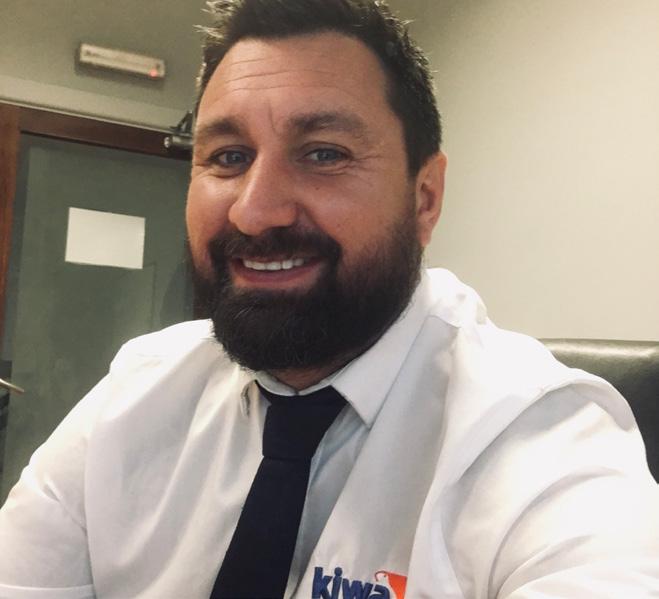
4 minute read
Demonstrating compliance with the Water Supply Regulations
Demonstrating compliance with the Water Supply Regulations
Chris Callander spoke to Jonathan Price, Business Development Manager at Kiwa Watertec, to find out about the Kiwa UK Regulation 4 certificate (KUKreg4), an option for demonstrating compliance with the Water Supply (Water Fittings) Regulations.
Water installations in the UK need to comply with the Water Supply (Water Fittings) Regulations 1999 England & Wales, 2009 Northern Ireland and 2014 Byelaws Scotland. In respect of water fittings and their requirements, reference should be made to Regulation 4. Regulation 4(1) states that ‘every water fitting should be of an appropriate quality or standard’ and regulation 4(2) provides the options to demonstrate compliance, i.e. CE Marking where applicable, appropriate British or European standards, and also a specification approved by the regulator.
Historically, the established voluntary practice has been for ISO17025 accredited laboratories to issue test reports against these specifications and then forward a technical file incorporating these results to WRAS (Water Regulations Advisory Scheme) to issue a certificate of approval.
In recent years manufacturers have opted out of getting voluntary WRAS approval and have asked Kiwa to provide an equivalent declaration of compliance, which has been done using a Kiwa UK Regulation 4 certificate (KUKreg4).
flow: What are the Water Supply (Water Fittings) Regulations, and why are they important?
Jonathan Price: The regulations set legal requirements for the design, installation, operation and maintenance of water fittings, systems and appliances. They have been designed to prevent drinking water contamination and prevent misuse, waste, undue consumption, and erroneous measurement..
f: Why is it important to have an approval in place to demonstrate compliance with the regulations?
JP: This will satisfy water authorities, specifiers and contractors that the product has undertaken the required testing and meets the necessary design requirements for its use. Being able to advertise an approval mark, such as KUKreg4, also gives a product a competitive advantage over alternatives that do not have any approval or recognised product compliance in place.
f: How does the KUKreg4 scheme achieve assurance that a product complies?
JP: KUKreg4 is a robust method for demonstrating compliance with the Water Supply (Water Fittings) Regulations 1999 as the testing is undertaken in an ISO 17025 accredited laboratory and complies with ISO 17065 product certification. During the process of approval, products undertake rigorous testing, and the certification decisions are made by people who have many years’ experience in the industry.

Jonathan Price, Business Development Manager at Kiwa Watertec.
f: Compared to the alternatives, how well recognised is KUKreg4 approval among the water authorities?
JP: Historically, WRAS has been the most well-known approval among contractors, specifiers and water authorities. However, recently there have been some changes within WRAS, and the decision making of the approval certificates no longer involves the water authorities. In light of this, water authorities now refer to products having to comply with Regulation 4 rather than specifically to WRAS or any other way of demonstrating product compliance. KUKreg4 has been an accepted way of demonstrating compliance for several years, but the KUKreg4 brand is much more prominent today than it has ever been.
f: Are end users/specifiers/system designers also aware of the alternative, and are they happy to specify products approved to KUKreg4?
JP: As we all know, it takes time to change people’s mindset when they have been familiar with one way of doing things for so long. I always use the example of the term ‘Corgi registered’; when that changed, it took people a long time to get used to using the term ‘Gas Safe registered’. This will be the same with KUKreg4; specifiers and contractors will become more familiar with it the more it is used. With the water authorities now using the terminology that products must be ‘Regulation 4 compliant’, this will undoubtedly increase visibility in the industry of KUKreg4. So in answer to the question, I would say why not? It is one of the recognised ways of doing this.
f: What are some of the advantages of taking the KUKreg4 approach?
JP: A key advantage of the KUKreg4 option is that certification decisions are made within Kiwa, so there are no cut-off dates for products to be granted approval. Also, with Kiwa being recognised across Europe, there are opportunities within the approval process to save manufacturers time and money on testing because for certain product groups, the testing and certification process can be cross-referenced. KUKreg4 also offers two levels of compliance – level 3 and level 1+. Level 3 is the equivalent service offering of WRAS (initial testing, no annual audits and a full re-test after five years). Level 1+ involves initial testing, but no full re-test after five years is required – assuming there are no significant changes to the product – as certification is maintained via annual audits of the manufacturing facility. The 1+ system is particularly beneficial to manufacturers with large product groups.










